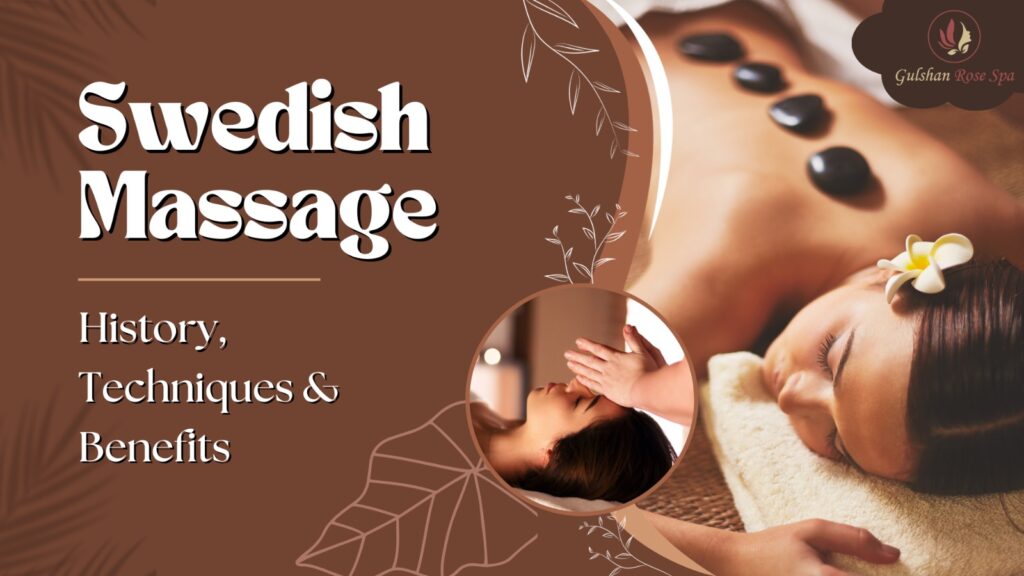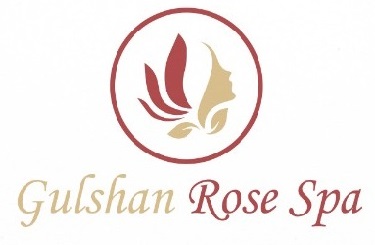Swedish Massage: History, Techniques and Benefits

Swedish Massage is among the most prevalent and productive forms of massage therapy. It is a marvelous fusion of gentle to firm gliding strokes that, when combined with joint lengthening and extending, facilitates complete muscle relaxation and the release of tension. History of Swedish Massage The Swedish massage evolved from a fortuitous discovery of therapeutic properties. A fencing instructor by the name of Per Henrick Ling sustained a forearm injury that impeded his progress. As Ling sat at a table and continued to touch his elbow on the wood, the discomfort in his body gradually subsided. Ling realized in the 1830s that his injured joint would serve as the impetus for an extraordinary practice—one that would forever alter the lives of his clients. In the 1850s, Dr. Charles and his colleague, Dr. Taylor, traveled to Ling to observe and refine the technique before introducing it to the United States. In contrast to the practice of attributing the name of an invention to its creator, the reason for the given name is that it originated in Sweden. Throughout the early 1900s, this technique grew in prominence. An entire system, including physiotherapy, movements, and manipulation, was developed around it. In addition, electrotherapy and hydrotherapy were incorporated. Methods Employed in Swedish Massage The Swedish massage modality incorporates five fundamental techniques. Each promotes a distinct aspect of the healing process and imparts a unique sensation. Petrissage The petrissage method bears a resemblance to the process of kneading bread dough. This technique involves the therapist lifting, rolling, and squeezing the flesh either beneath or between their palms. Vibration The vibration technique involves a light tremor or jolt of the body. This can be accomplished by employing the digits or the hand. The tension is alleviated as the minor muscles are manipulated in this manner. Typically, this technique is applied to bony or touch-sensitive areas such as the spine, temple, and any other facial region. friction The friction stroke represents the deepest point of the Swedish Massage. The therapist gradually releases the pressure by applying pressure to the flat of the palms and the pads of the fingertips or forearms. When manipulating deeper tissues, the motion will consist of circular alternating gliding or slicing motions to ensure uniform pressure distribution throughout the tissue. While this method involves working across the musculature, the load is distributed evenly across the entire hand, in contrast to a deep tissue massage that concentrates pressure on the knuckles. Effleurage This type of stroke occurs frequently throughout a session. The procedure entails the therapist applying oil to the targeted area and utilizing it to glide over the body’s contours. Typically, the therapist will glide along the body in the direction of the pulse using the palm of their hand. The pressure is consistently administered at a moderate to low intensity. A technique for warming the muscles, the effleurage stroke promotes relaxation, soothes the nerves, and enhances blood, cardiac, and lymphatic circulation. Tapotement This is the method that is frequently depicted as excruciating and strenuous on television. Bear in mind that the level of intensity employed is discretionary, and the therapist may utilize milder or firmer pressure in accordance with your needs. Cupping can be incorporated into tapotement as part of a Swedish massage. At this point, the therapist cups their hands so that they can only bend at the lower fingertips. The hands then make rapid, rhythmic contact with the body with their palms flat. Additionally, hacking can be employed. As an alternative to palm-based cupping, the therapist will employ a slicing motion. The pummeling stroke concludes with the application of fists from both palms over the thighs and buttocks. If you are confused about which type of Swedish Massage you want to go for, ‘Gulshan Rose Spa,’ located in Gulshan, Dhaka, can be a great option to consider to answer all your questions. Their professional consultants can guide you to get what you are looking for or give you the proper advice. Benefits of Swedish Massage Swedish Massage has been proven beneficial in many aspects of health conditions. Some of them are mentioned below: Strengthen Posture Although there are numerous causes of postural imbalances, such as injury, overworked muscles resulting from repetitive strain, prolonged sitting, overcompensating muscles to alleviate stress on overworked muscles, or overworked muscles themselves, Swedish Massage assists in alleviating the muscular tension that underlay these imbalances. Eliminate Metabolic Byproducts via Flushing. By increasing circulation, Massage eliminates lactic acid and uric acid, which accumulate in muscles as a result of excessive use. Enhance the Supply of Nutrients to Muscles Swedish Massage supports the delivery of nutrients and oxygen to the muscles by enhancing circulation. Enhances Sleep According to studies, receiving a massage increases serotonin levels, allowing for a more rapid and prolonged fall slumber. Expand the Range of Motion By integrating a range of motion and stretching techniques, Swedish Massage will lubricate and loosen the joints, allowing for greater mobility and fluidity of motion. Mitigate Headaches A significant number of headaches and migraines are caused by anxiety and/or inadequate blood flow. Swedish Massage promotes circulation and alleviates the stress related to tension and anxiety. The Release of Endorphins to Elevate mood Massage recipients experience elevated levels of serotonin and dopamine, which, according to research, enhances their mood and sense of mental health. Enhance Agility Swedish Massage promotes joint elongation, muscle relaxation, and a reduction in edema, all of which contribute to enhanced flexibility and mobility. Mitigates Stress Many of us lead hectic, overworked, and overscheduled lives. The physical manifestations of stress include heightened muscle tension and, in some cases, discomfort. Mental manifestations of stress include heightened levels of concern or anxiety. Swedish Massage assists in purifying the mind and body of unwelcome stress responses. Relaxation Swedish Massage alleviates muscular tension and soothes the nervous system. Enhance the Circulation of Blood By expanding the membrane apertures and dilatation of the blood vessels,
Body Massage: A Relaxing and Therapeutic Experience

Body massage is the act of rubbing the body with hands, fingers, knees, elbows, forearms, feet, or any other massage tool. Most of the time, organized or unstructured motion is used to put pressure on a specific section of the body. In today’s fast-paced society, physical and mental tension cause physical exhaustion. A masseur or massage therapist is skilled at massaging away the body’s discomfort, stress, fatigue, and anxiety. Muscles, tendons, epidermis, and ligaments are rubbed and manipulated during massage. Massage rubs away fatigue and tension. It enhances blood circulation. It produces a pleasurable sensation on the skin and works on delicate tissues such as muscles, tendons, and ligaments, enhancing muscle tone. Its benefits extend to the deeper muscle layers and even the internal organs. It alleviates muscle spasms and tension. It aids in eliminating waste and toxins from the body. Considering the benefits of Spa, more and more Spa centers are opening daily in the heart of Dhaka city, and Gulshan is the most considerate location to get a quality service in this genre. In fact, Gulshan Rose Spa can be one of the best places to get a pleasant body massage. There are many kinds of massages on the market right now. I’m going to list some of the most popular ones. Swedish massage Swedish massage is one of the most popular forms of massage available. It is performed in order to revitalize the body and enhance overall health. This massage technique involves percussion, kneading, vibration, pressing, and rolling. Massage oils can be used to shield the skin from friction. Swedish massage may aid in alleviating symptoms of depression, anxiety, and tension. Back pains, headaches, muscle issues, and other chronic complaints are a few of the signs that this kind of massage therapy can help alleviate. Receiving a Swedish massage is also advantageous for the heart. A masseuse manipulates the soft tissues of the body (muscles, tendons, ligaments, and blood vessels) and employs strokes that flow towards the heart to enhance blood circulation. Thai massage Thai massage has been practiced for almost 2,500 years since it first appeared in India. Thai massage was first practiced as a healing process, drawing from Ayurvedic and Chinese medical traditions. You won’t get oil rubbed all over your body and kneaded into the tissues and pressure points like you would at a Western-style massage. Instead, you’ll lie on a mat on the floor, clothes and all, while a therapist utilizes stretching, tugging, and rolling techniques to ease muscle tension, calm the mind, and increase range of motion and blood flow. Another variant of this massage is aromatic Thai massage. Unlike the normal one, it is done with warm oils & aromatic herbs. Thai massage, often known as assisted yoga, balances your body’s energy channels. Traditional Thai massage has the potential to alleviate the pain of migraines and tension headaches. Thai massage has been shown to mitigate the severity of both migraines and tension headaches in numerous minor trials involving individuals with persistent headaches. Thai massage is more active than other types of massage, but research has shown that it can help reduce stress and make you feel calmer. Studies have shown that people who get Thai massages are less stressed afterward. When people got Thai massages, their brain scans showed that they were more relaxed and had much less worry than when people got physical therapy for the same illnesses. Neuromuscular massage therapy Neuromuscular massage therapy, additionally referred to as myofascial trigger point treatment or myofascial release, is a specific type of massage that involves putting firm, long-term, and controlled pressure on painful, tight bands of muscle, which are called myofascial trigger points. This is meant to relieve stress and tension in those points. Pressing on the fibers for a long time is intended to “soften” them and make them “loose.” Once the fibers are loose, blood flow is increased to the area that wasn’t getting enough blood and oxygen before. This helps the area heal and finally stops hurting. Neuromuscular massage-trained therapists can find trigger points by figuring out how the patient’s pain works. A trigger point massage therapist can look at the muscle and figure out how many sessions might be needed to enhance tone, equilibrium, and muscle power. Types of Body Treatment A spa’s list of treatments, massages, and facials might be the first things that catch your eye. But what about scrubs and wraps done by professionals? These body treatments are indulgent and pampering, and their benefits actually go beyond rest. Some of these spa services can be helpful, like getting rid of dead skin cells and toxins. But are they truly worth the extra money? Let’s find out. Body Scrubs Body brushes remove dead skin cells from the outermost layer of your skin by rubbing them against rough materials. They are also known as body polishes and exfoliating treatments. Sugar, coffee, salt, and pulverized nuts are the most common ingredients in body scrubs. These substances are combined with herbal hot oil or lotion to form a paste, which is then applied to the skin and stroked in a circular fashion to exfoliate the skin. The paste is washed off with a warm shower after the scrub, leaving the skin silky-smooth and glowing. Some advantages of body scrubs are: Body Wraps Body wraps involve putting different substances on the skin and covering them with bandages, cloth, or plastic. Various things can be used in body wraps, but clay, seaweed, or plant mixtures are often used. The wrap is then put on and left on for 30 to 60 minutes. It is then taken off with warm water along with a shower. To get the most out of the benefits from these substances, some body wraps may come with a massage prior to or following the wrap. Some advantages of body wraps are: How to choose the correct body massage and therapist for you To get the most out of your body massage, keep these tips in mind: Conclusion Everyone,
